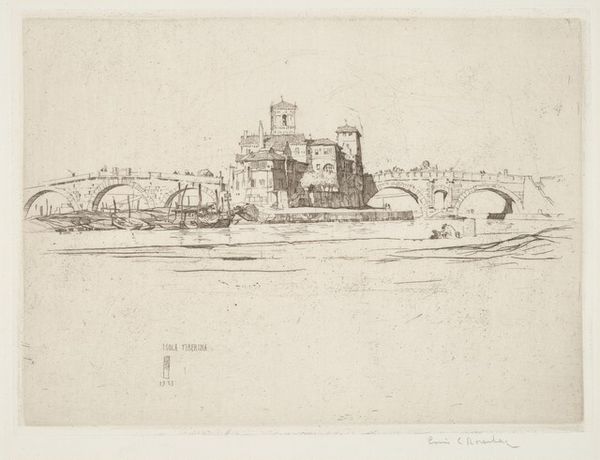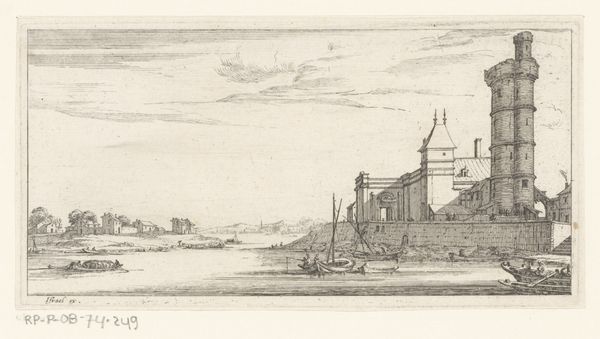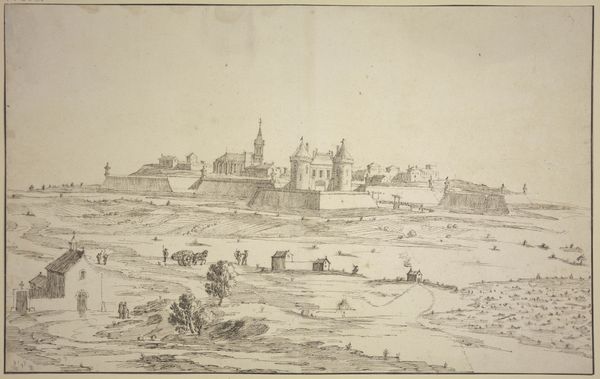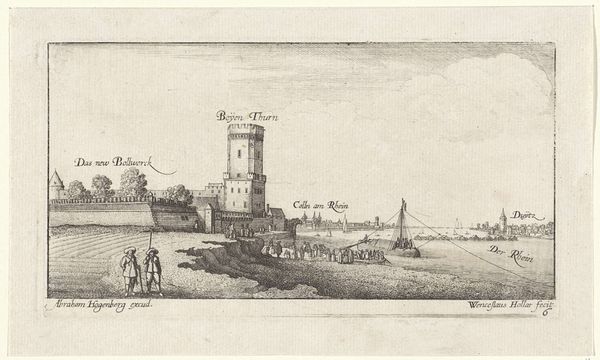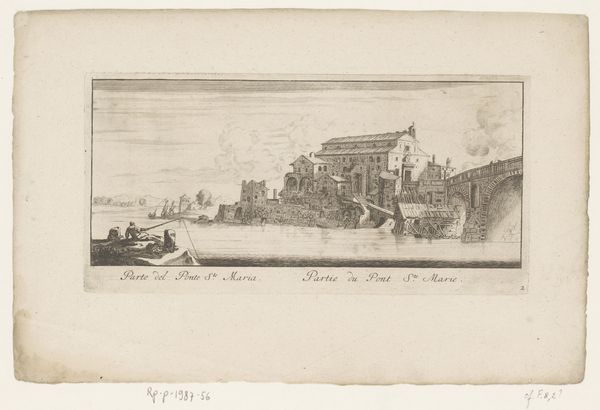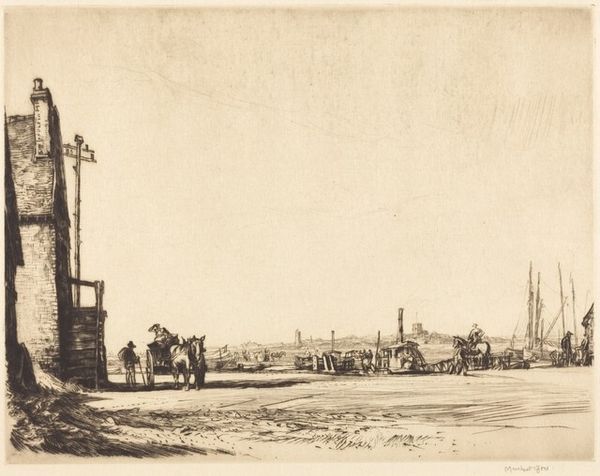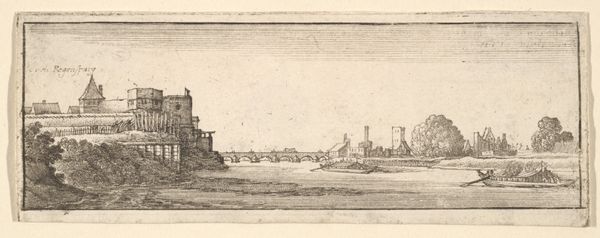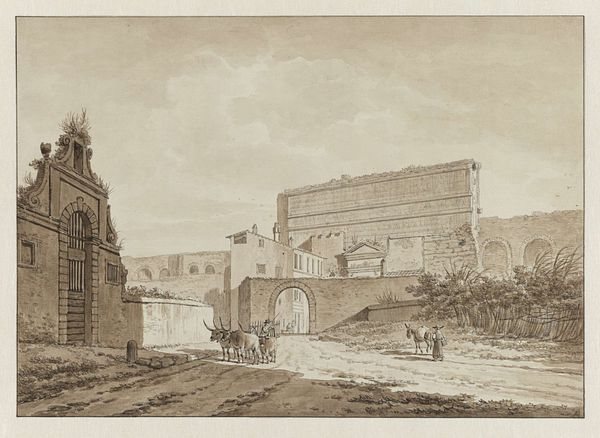
print, etching
# print
#
etching
#
etching
#
cityscape
#
islamic-art
Copyright: National Gallery of Art: CC0 1.0
Curator: Louis Conrad Rosenberg created this etching, entitled "Grande Mosque, Kairouan, Tunisia," in 1926. Editor: There's a wonderful, quiet strength in this piece. The heavy walls of the mosque feel imposing, yet the light etching technique keeps the whole image airy. I notice a certain dignity in its simple, yet evocative strokes. Curator: Indeed. Rosenberg was known for his architectural prints. In this one, the stark simplicity highlights the mosque’s cultural significance as a religious and civic center. Etchings like this were critical in shaping Western perceptions of Islamic architecture. How do you see its impact in that broader narrative? Editor: Immediately, I think about the Orientalist context of its creation. Rosenberg, as a Western artist, frames the mosque not just as architecture, but also as a representation of an 'othered' culture. The composition and medium choices, an etching, suggest both a fascination with and a distance from the subject. Are the figures mere bystanders, or do they belong? Curator: That’s an excellent point. He presents an idealized view of North Africa during a time of French colonial influence. His aesthetic choices, avoiding overt political commentary, reflect the sensibilities and consumption habits of the art market he catered to, and in doing so reinforces that relationship. Editor: I think placing this piece in its art historical context helps to acknowledge the power dynamics at play. While seemingly neutral, the image subtly influences perceptions, potentially exoticizing the mosque and its surrounding culture for a Western audience. Does Rosenberg truly present Tunisia as it is or does the final product show more what Europeans wanted to see? Curator: Exactly. We can reflect upon what’s present – the careful detail in the minaret, the flow of human movement alongside animal, and the sky looming above, while thinking critically about what's not. In looking closely, hopefully, we have a clearer vision that can challenge and reframe traditional narratives. Editor: I agree. Examining Rosenberg’s piece allows us to engage with layered histories. Curator: By investigating his perspective we have uncovered critical socio-political frameworks in visualizing cultural heritage and historical dynamics between the East and the West.
Comments
No comments
Be the first to comment and join the conversation on the ultimate creative platform.
